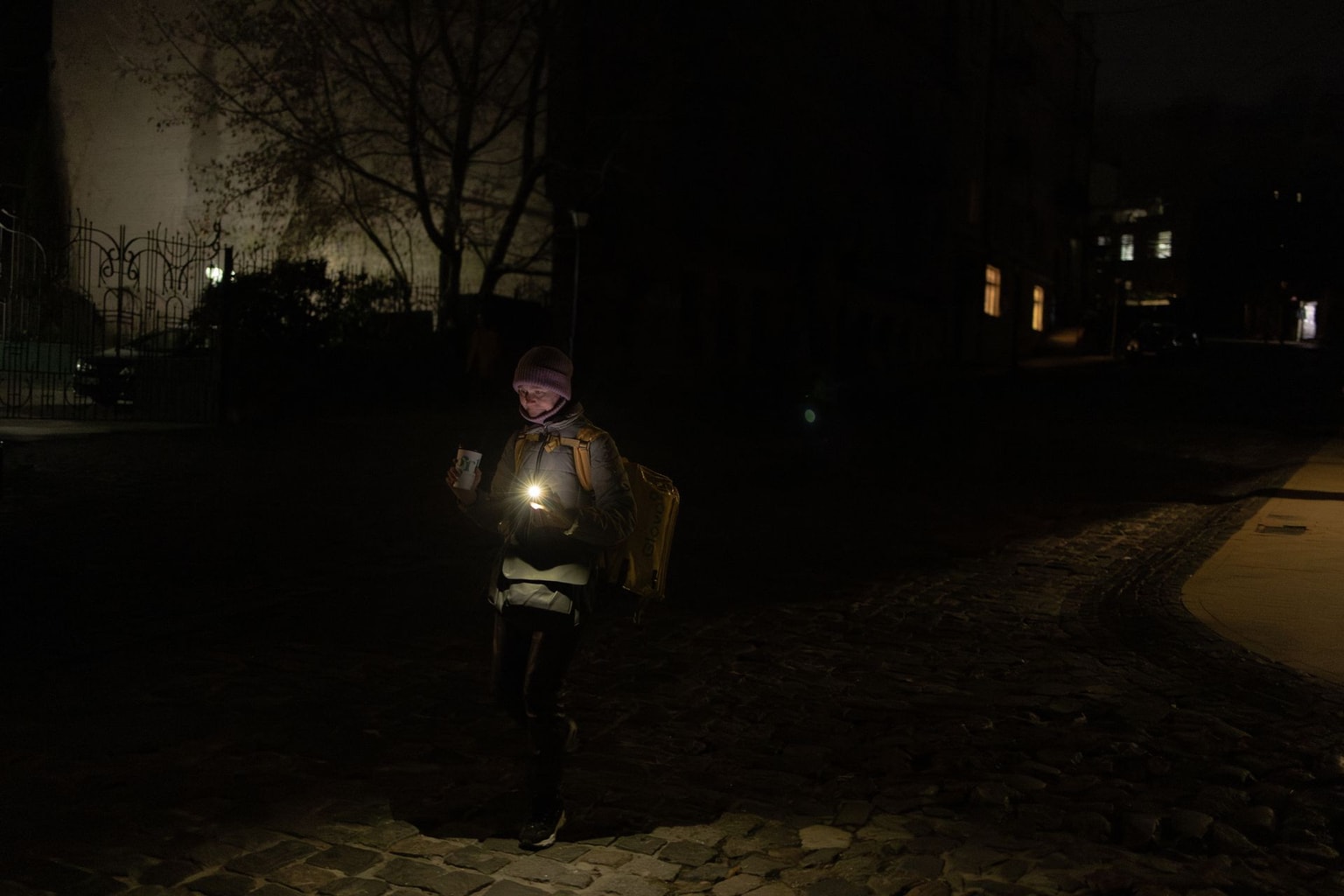
Ukraine's northern fortress city of Chernihiv braces for a worst-case scenario winter
Chernihiv residents charge their electronic devices at a Point of Invincibility during a blackout in Chernihiv, Ukraine, on Oct. 10, 2025. (Maksym Kishka / The Kyiv Independent)
CHERNIHIV OBLAST - As evening settles over Chernihiv in northern Ukraine, the city plunges into darkness, broken only by the noise of generators. Their constant hum is now so common that it sometimes obscures even the sound of Russian drones moving across the night sky.
But Nataliia Svyrydenko, who has lived in Chernihiv's Bobrovytsia district for 26 years, can still identify the sound instantly.
"It is impossible to describe what you feel inside. You do not know whether it will pass over or come down on your house. It is very frightening, very hard, and just deeply sad," she told the Kyiv Independent.
This autumn, Russia renewed its campaign against Ukraine's energy infrastructure, leaving Chernihiv, located nearly 70 kilometers (45 miles) from the Belarusian and Russian borders, once again caught in the crossfire. With freezing weather approaching and the constant threat of Russian attacks, people in Chernihiv are no longer debating if the blackout-ridden months will be difficult, but how difficult they will be and how long they can endure them.
Chernihiv, home to nearly 270,000, was among the first cities to confront Russia's full-scale invasion in February 2022. As long columns of Russian heavy armor pushed toward Kyiv, Ukrainian forces in Chernihiv Oblast held the line, stopping the advance and preventing the regional center from being encircled.
The months residents of Chernihiv Oblast spent without water, electricity, or heat — under constant bombardment — in early 2022 are impossible for them to forget. This fall, as attacks intensify, the survival habits they learned then have become relevant again.
By targeting energy infrastructure, including gas storage and gas transmission facilities, Russia appears to be testing a new strategy in Chernihiv Oblast, according to experts and energy workers who spoke with the Kyiv Independent: isolating border areas from Ukraine's unified energy system to make the coming freezing months unbearable for residents.
"The intensity of the strikes is extremely high. I cannot say we are coping."
Russia's new strategy relies more heavily on drones than missiles and includes double-tap strikes on energy facilities — sending a second drone 20-40 minutes after the first, often as repair crews are already at work. This approach not only hinders repairs but also puts energy workers in danger, Governor Viacheslav Chaus told the Kyiv Independent.
Some damage can be repaired within hours, while other repairs may take more than a week, and the number of Russian attacks has only grown in recent months, according to the governor.
"The intensity of the strikes is extremely high. I cannot say we are coping. An enormous number of drones are flying overhead," Chaus said.
As Russian attacks intensify and winter closes in with falling temperatures, the region and the northern fortress city of Chernihiv are preparing for another difficult season of battling darkness and cold.
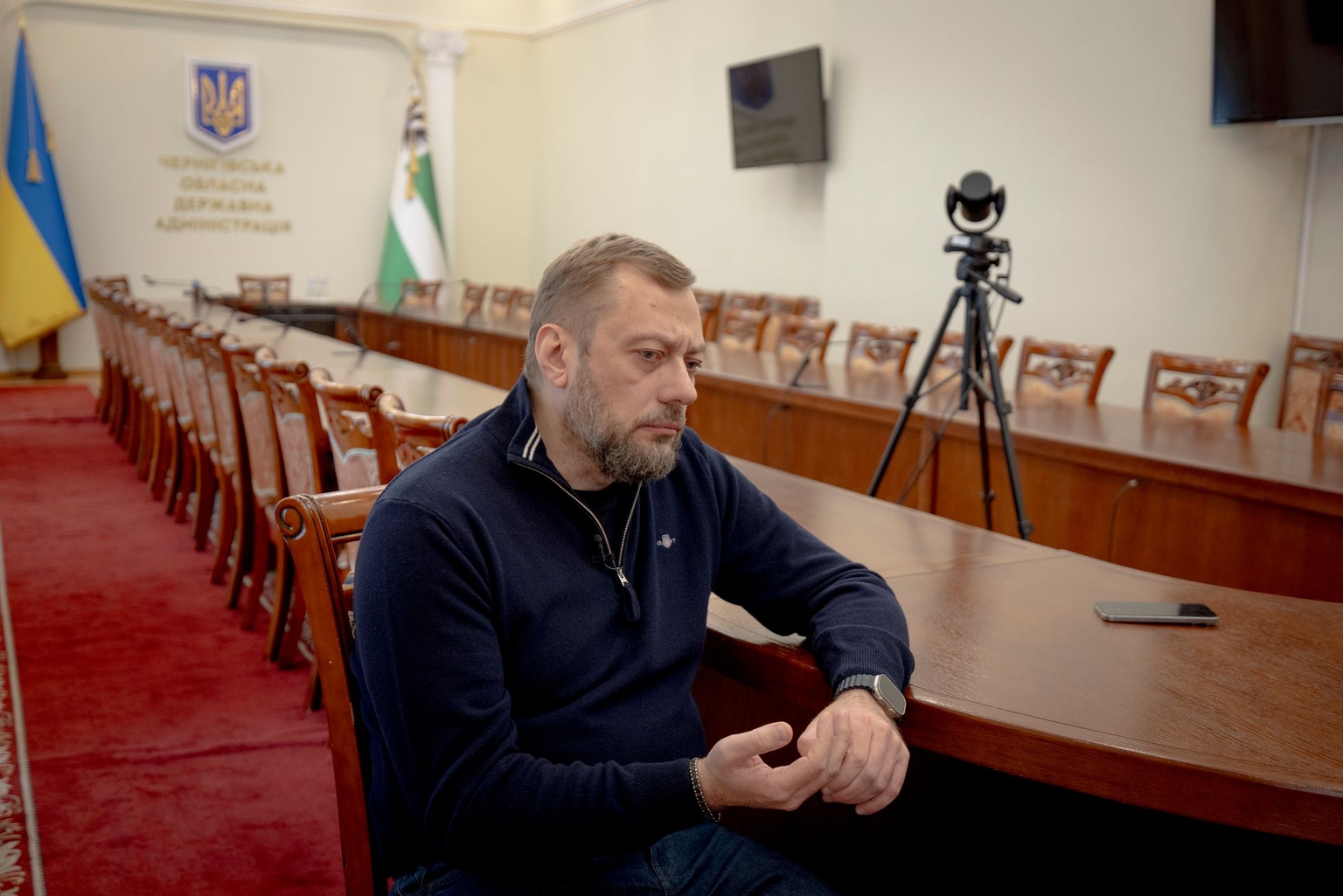
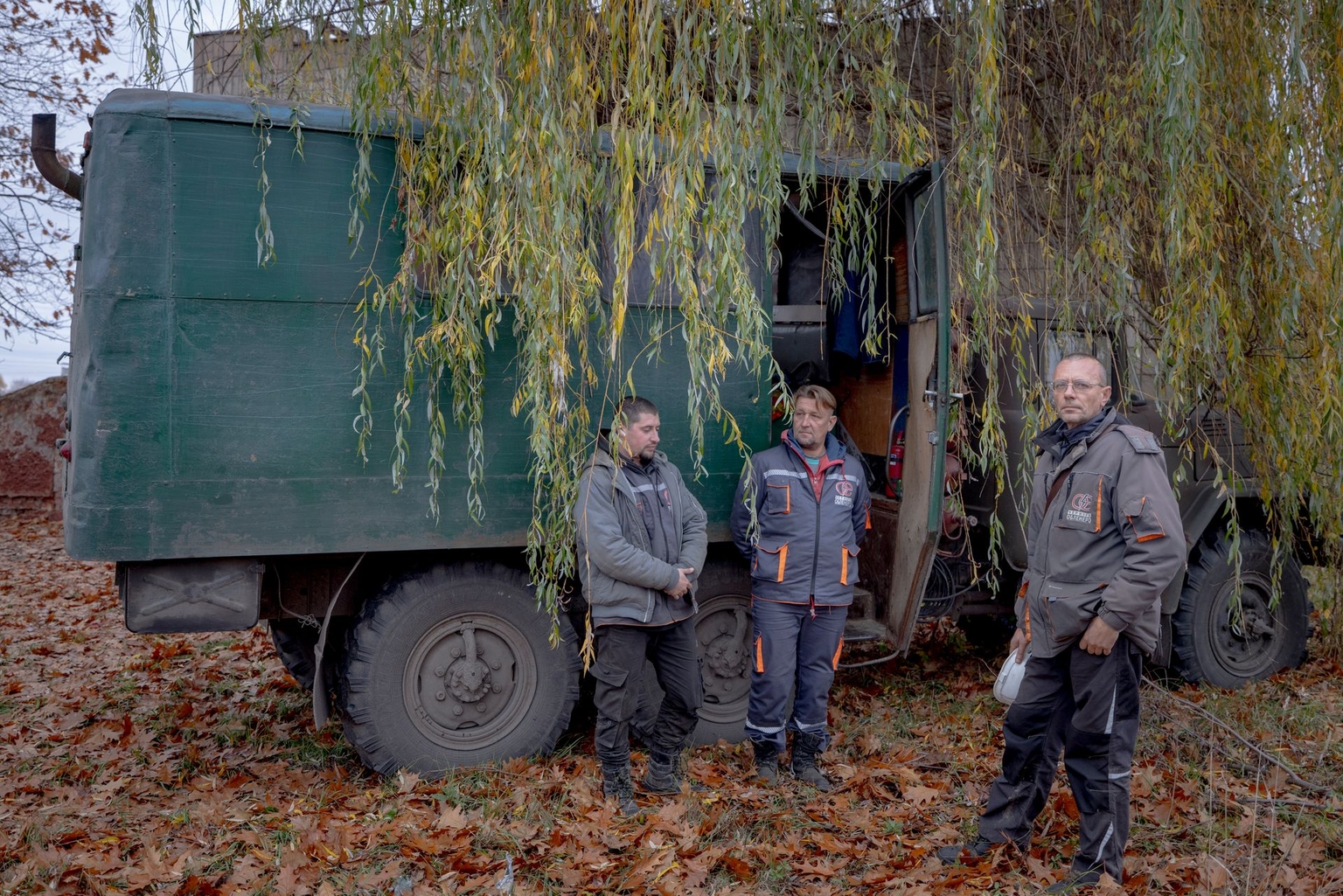
A matter of habit
The Bobrovytsia neighborhood, in the northeast of Chernihiv near the Desna River, bore the brunt of the early days of the full-scale invasion as Russian troops advanced.
Even now, the few people moving through the streets pass rows of damaged property. Fences are torn and riddled with holes. Many homes have been restored, but signs of the strikes remain etched into their walls. Some houses lie completely flattened, beyond any hope of repair.
This area, characterized by single-story or two-story residential buildings, is distinguished by a 9-story apartment building. The building suffered a series of direct strikes, causing some floors to collapse in the early months of the full-scale war.
Nearly three years later, some residents still live there. Yet locals said the neighborhood is slowly emptying, with fewer and fewer windows glowing at night.
With a new wave of blackouts this fall, the neighborhood has already faced periods when electricity was available for only about half an hour a day. Without power, residents on the upper floors may also lose access to water and heating due to low pressure in the supply pipes.
When darkness engulfs the area, a water truck is brought in, and a so-called "point of invincibility" is established — a space where people can recharge their devices, warm up, and access the cellular network and the internet during power outages.
"Sometimes you read online that one drone is headed your way, but in reality, there are already five of them, circling back and forth."
Recalling the recent blackouts, Nataliia Kot, a resident of the neighborhood, said her home had been without electricity for almost two days. Having lived through the full-scale invasion, she said, "You can survive in any situation."
"Our street can stand up for itself. We lived together in a bomb shelter (in early 2022) and helped each other," Kot told the Kyiv Independent.

Amid worries that Russian attacks could leave residential buildings without heat, Kot stocked up on firewood last year and is ready to rely on a stove if the heating is cut off.
Nataliia Svyrydenko, another Bobrovytsia resident, told the Kyiv Independent that she plans to rely on firewood this winter as well, noting that during the full-scale invasion, the locals had managed to adapt to difficult conditions.
For most residents, blackouts are a minor worry — they have long relied on powerful power banks and know how to save electricity. Drones, however, remain the source of their deepest fear.
The drones circle the skies all day but are especially active in the evening. Air raid alerts in the region can last all night, sometimes even longer, according to Svyrydenko.
"In 2022, (Russian forces) were attacking around the clock, but I was not afraid," Kot said. "But now, when a drone is flying and you hear it diving… It is very scary because it feels like it is coming right at you."
"Sometimes you read online that one drone is headed your way, but in reality, there are already five of them, circling back and forth," she added.
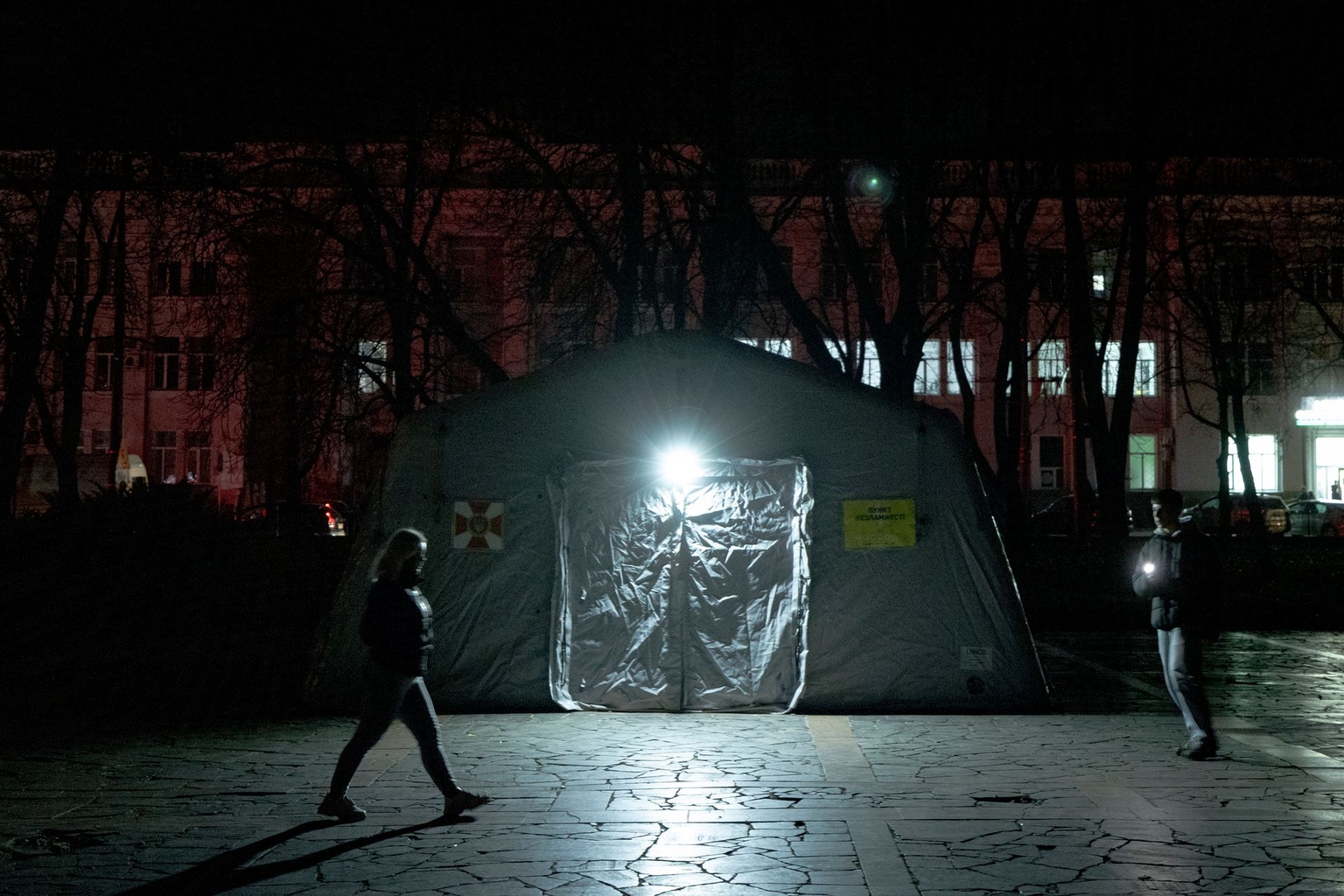
Drone swarms descend on city center
Chernihiv Oblast's location near the Russian and Belarusian borders makes drone activity a frequent occurrence. In October alone, Russia launched more than 1,700 drones over the region, according to Governor Chaus.
At the same time, Russia is upgrading its drones to make them more resistant to Ukrainian electronic warfare and able to operate at altitudes that can evade Ukrainian radar detection. Some of these drones hover over the regional center for hours before moving on to their next destination, striking a target, or being intercepted by air defenses.
"No one will shoot down drones directly over the city — we understand the consequences," Chaus said. "The main task of air defense is to intercept drones as they approach urban areas. But given their sheer numbers, that is not always possible."
Patients at the Chernihiv Regional Children's Hospital, situated in the heart of the city, frequently hear drones buzzing overhead. The building often shakes from the shock waves of attacks on the city center, Tetiana Lebedieva, the hospital's general director, told the Kyiv Independent. But over time, the sense of fear begins to fade.
"The scariest thing is when children see a drone flying by and say, 'There is nothing to be afraid of.' But is it really nothing to be afraid of when 50 kilograms of explosives are flying overhead?" Lebedieva said.
At the start of the full-scale invasion, Lebedieva's hospital became one of Chernihiv's main shelters.
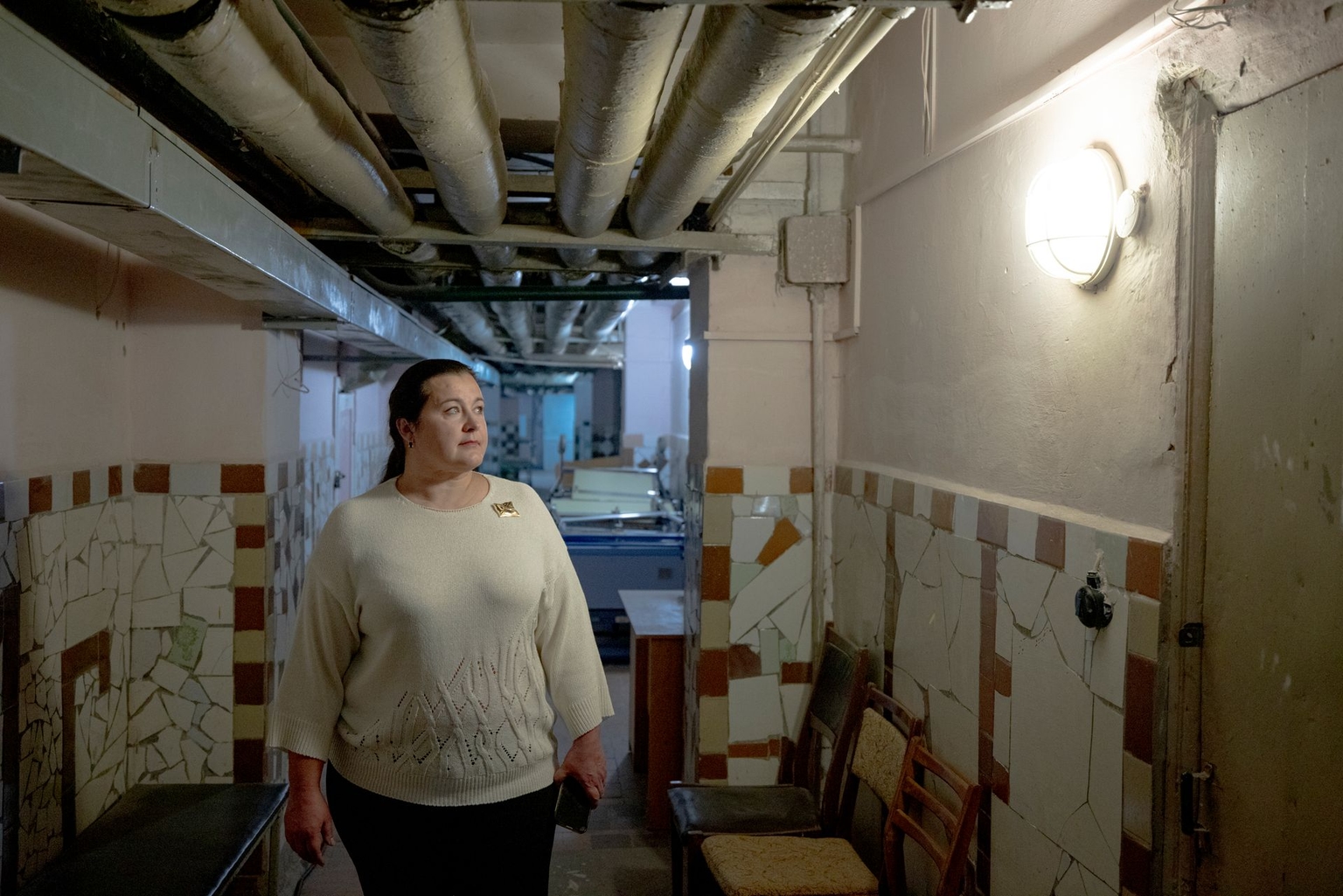
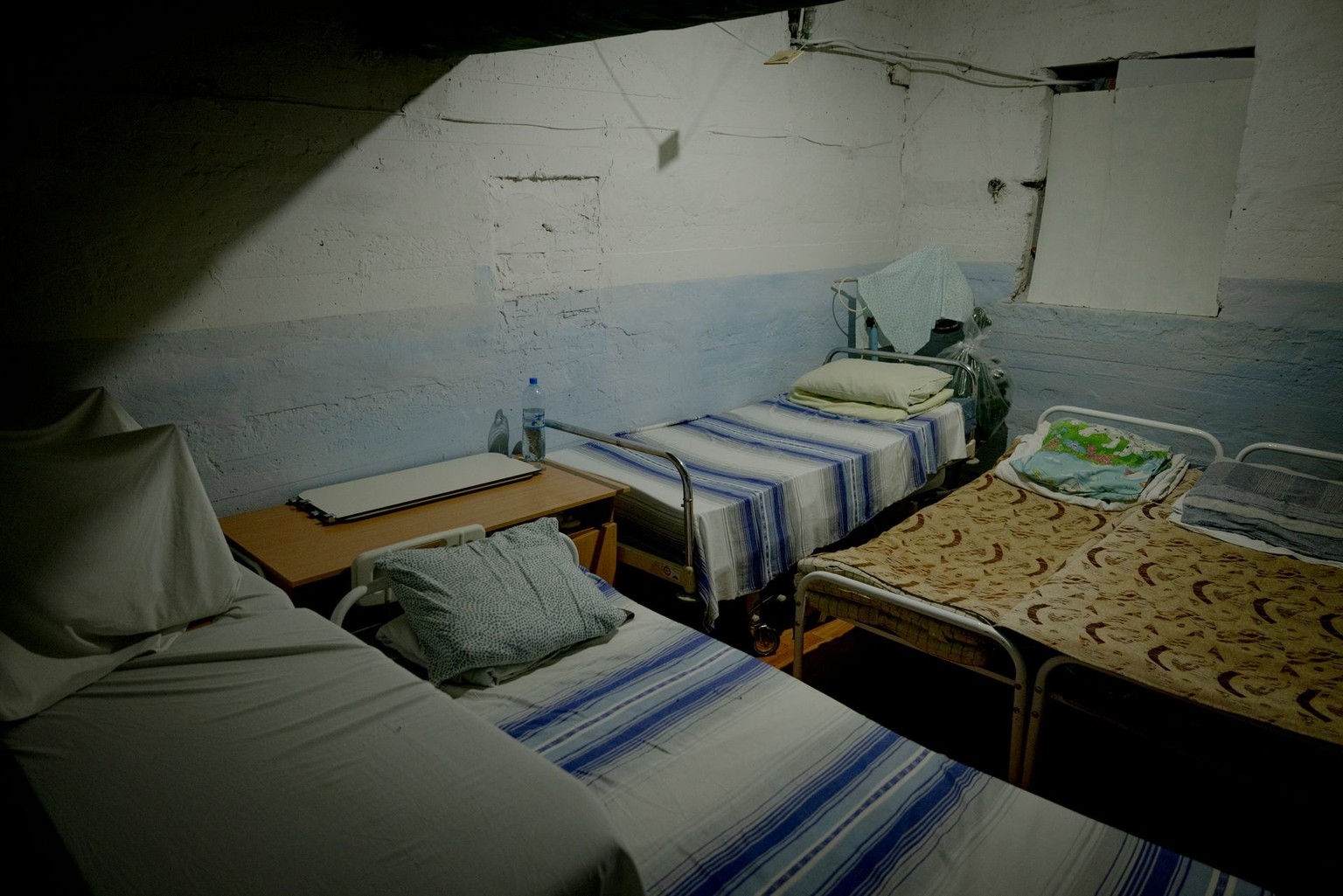
Lebedieva still keeps an album of photos showing doctors working in near-total darkness, taking care of both small children and adults injured in Russian attacks. The danger was ever-present: the glass in the door of one examination room remains shattered from cluster munitions that regularly exploded near the building in 2022.
Lebedieva said the first year of the full-scale invasion taught the hospital many lessons.
The hospital now maintains stocks of water, food, and medicine for at least three months. One of the buildings, which houses the hospital's youngest patients, has an autonomous power supply that can last at least three days in the event of a complete blackout. Switching to this backup power takes just one to two seconds — crucial for patients on life support.
"2022 showed how scary and dangerous this is. We had a case where doctors had to manually ventilate infants for eight hours, taking turns to keep them alive," the general director told the Kyiv Independent.
One of the hospital's next priorities is to build a specialized bomb shelter, a costly project for which it is now seeking donors. The facility also lacks sufficient power during blackouts to maintain full lighting, forcing scheduled examinations to be postponed whenever emergency outages occur — only urgent care can continue under those conditions.
Lebedieva added that every blackout tests their preparedness, though there is always room for improvement. She viewed the coming fall and winter with caution, as the risk of losing one of the most essential elements of quality medical care remains high.
"If we do not have heating, we will not be able to survive the winter in this building," Lebedieva said.
Prospects offer little optimism
Speaking to the Kyiv Independent, residents of Chernihiv said they are far from optimistic about the upcoming winter. Most are preparing for the worst-case scenario: prolonged outages of electricity, water, and heating.
Constant Russian attacks on energy infrastructure — which have risen sharply in the region this year — mean repairs now take much longer. After a strike, Russian drones often continue to circle the area, waiting to attack again as soon as energy workers begin restoration efforts.
"This facility was destroyed yesterday. It was struck twice, and today drones returned to strike again," said Serhii Pereverza, deputy technical director for low-voltage networks at Chernihivoblenergo JSC, pointing to a transformer that had been completely burned out.
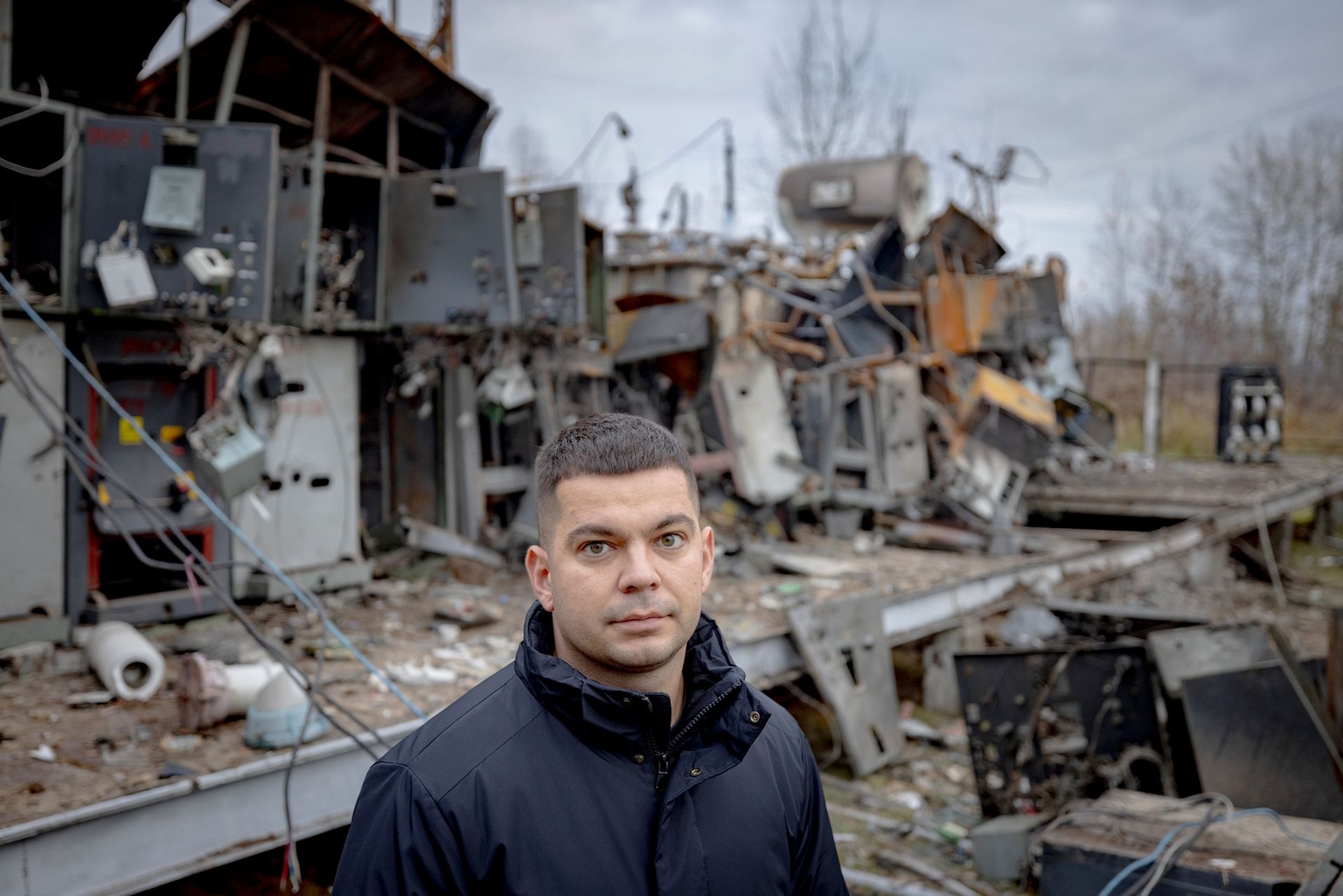
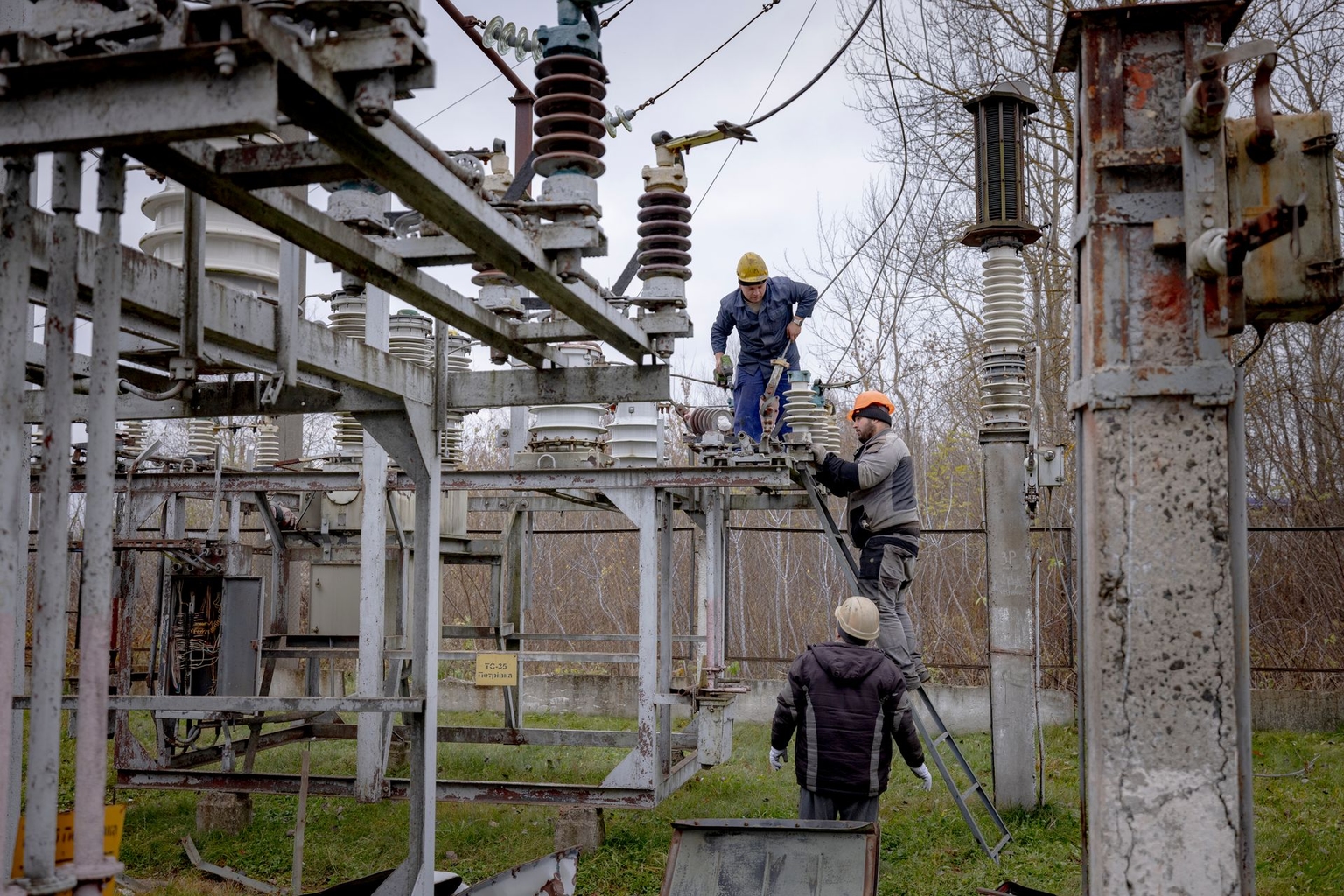
At the site of the drone attack in northern Chernihiv Oblast, only charred metal frames riddled with holes remained of the transformer substation, with smoke still rising nearly a day after the strike.
Such substations are crucial to Ukraine's energy infrastructure, as they distribute electricity across the country's regions. At the same time, damage to this equipment hits the region hard, given the limited number of spare units and the high intensity of strikes, Pereverza said.
"We have had cases where up to three substations were damaged in a single day," the deputy technical director added.
Pereverza did not rule out that Russia may be attempting to isolate Chernihiv Oblast from Ukraine's wider energy system by targeting substations, leaving the region to face the challenge alone.
Local energy workers, operating under the constant risk of attack, have been managing the load, but the outcome will depend on the intensity of future Russian strikes. The situation with heating also remains uncertain, according to Pereverza.
"The situation with heating could be especially difficult, particularly in large cities with centralized systems. Everyone in the region needs to start preparing now," Pereverza said.
"The only thing we can be optimistic about is our morale. Unfortunately, we cannot predict anything else, given the worsening and escalating situation," he added.
Additional reporting by Maksym Kishka.
A note from the author:
Hi, Kateryna here — in Chernihiv, I met people whose courage and warmth are simply unforgettable. Even when Russian attacks cut off their power, their heat, and affect their sense of safety, they continue to believe in light, hope, and the arrival of spring after winter.
Their resilience fuels my mission to tell stories that matter. If you want to support this work, consider joining our community and helping us reach 25,000 members by the end of the year.








